A Beginner's Guide to Analyzing and Visualizing Mass Cytometry Data
- PMID: 29255085
- PMCID: PMC5765874
- DOI: 10.4049/jimmunol.1701494
A Beginner's Guide to Analyzing and Visualizing Mass Cytometry Data
Abstract
Mass cytometry has revolutionized the study of cellular and phenotypic diversity, significantly expanding the number of phenotypic and functional characteristics that can be measured at the single-cell level. This high-dimensional analysis platform has necessitated the development of new data analysis approaches. Many of these algorithms circumvent traditional approaches used in flow cytometric analysis, fundamentally changing the way these data are analyzed and interpreted. For the beginner, however, the large number of algorithms that have been developed, as well as the lack of consensus on best practices for analyzing these data, raise multiple questions: Which algorithm is the best for analyzing a dataset? How do different algorithms compare? How can one move beyond data visualization to gain new biological insights? In this article, we describe our experiences as recent adopters of mass cytometry. By analyzing a single dataset using five cytometry by time-of-flight analysis platforms (viSNE, SPADE, X-shift, PhenoGraph, and Citrus), we identify important considerations and challenges that users should be aware of when using these different methods and common and unique insights that can be revealed by these different methods. By providing annotated workflow and figures, these analyses present a practical guide for investigators analyzing high-dimensional datasets. In total, these analyses emphasize the benefits of integrating multiple cytometry by time-of-flight analysis algorithms to gain complementary insights into these high-dimensional datasets.
Copyright © 2017 by The American Association of Immunologists, Inc.
Figures

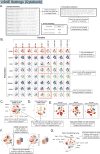
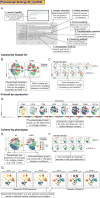
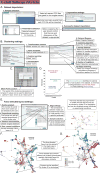
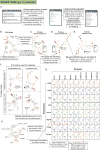
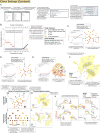
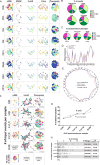
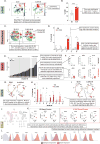
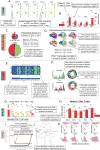

References
-
- Bandura DR, Baranov VI, Ornatsky OI, Antonov A, Kinach R, Lou X, Pavlov S, Vorobiev S, Dick JE, Tanner SD. Mass cytometry: technique for real time single cell multitarget immunoassay based on inductively coupled plasma time-of-flight mass spectrometry. Anal Chem. 2009;81:6813–6822. - PubMed
-
- Bendall SC, Simonds EF, Qiu P, Amir el AD, Krutzik PO, Finck R, Bruggner RV, Melamed R, Trejo A, Ornatsky OI, Balderas RS, Plevritis SK, Sachs K, Pe’er D, Tanner SD, Nolan GP. Single-cell mass cytometry of differential immune and drug responses across a human hematopoietic continuum. Science. 2011;332:687–696. - PMC - PubMed
-
- Horowitz A, Strauss-Albee DM, Leipold M, Kubo J, Nemat-Gorgani N, Dogan OC, Dekker CL, Mackey S, Maecker H, Swan GE, Davis MM, Norman PJ, Guethlein LA, Desai M, Parham P, Blish CA. Genetic and environmental determinants of human NK cell diversity revealed by mass cytometry. Sci Transl Med. 2013;5:208ra145. - PMC - PubMed
Publication types
MeSH terms
Grants and funding
LinkOut - more resources
Full Text Sources
Other Literature Sources
Medical

